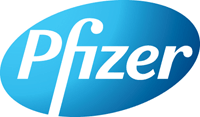 |
 |
SCDMDG presents:
Click here to print the meeting flyer and registration form.
SCDMDG Half-Day Symposium
Tuesday October 23, 2012
Keynote Presentation:
Pharmacokinetics of Protein Drugs
Dr. Thomas N. Tozer, Ph.D.
Professor Emeritus of Biopharmaceutical Sciences and Pharmaceutical Chemistry
University of California, San Francisco
San Francisco, CA
Registered participants are invited to participate in a poster session for the SCDMDG Symposium on October 23, 2012. Abstracts on any drug metabolism-related subject are welcomed. We can accomodate up to 44 36-inch wide by 48-inch tall posters
Click here to submit an abstract.
Speaker Bios / Abstracts
Professor Emeritus of Biopharmaceutical Sciences and Pharmaceutical Chemistry
University of California, San Francisco
San Francisco, CA
Presentation Synopsis:
The presentation will address the pharmacokinetic properties of protein drugs. For purposes of this presentation, compounds containing two or more amino acids connected by peptide bonds are considered to be "proteins" and those used as drugs are divided into two groups, non-antibody and antibody.
In general, there are far more non-antibody than antibody protein drugs on the market today, but antibody drugs have received the greater attention in recent years. For this discussion, a comparison of the kinetic behavior of protein drugs with that typical of small molecular weight non-protein drugs will be highlighted.
Some general conclusions can be made for both non-antibody and antibody protein drugs. Protein drugs have great instability within the gastrointestinal tract, precluding – with only a rare exception, their oral administration. For large protein drugs movement through the blood capillaries is slow so that following intramuscular or subcutaneous administration the systemic circulation is reached via the lymphatics, rather than through blood capillaries. Metabolism is often quite extensive after administration by these routes during the "first-pass", resulting in low systemic availability even though these are parenteral routes. Furthermore, the speed of systemic absorption from these sites of administration is very slow, particularly for antibodies for which the peak time of the plasma concentration is often 2 to 10 days.
Access to the interstitial fluids after intravenous administration is slow and therefore they often have small volumes of distribution, especially for large molecules. For many non-antibody drugs the kidneys are the major organs of metabolism. In contrast to small non-protein drugs, many protein drugs exhibit nonlinear kinetic behavior, often as a result of target-mediated drug disposition.
Presenter Bio:
Dr. Tozer, Professor Emeritus of Biopharmaceutical Sciences and Pharmaceutical Chemistry, School of Pharmacy, University of California, San Francisco, California, received his B.S. and Pharm.D. degrees in 1959 and his Ph.D. degree in 1963 from the same institution. After a two-year postdoctoral fellowship in the laboratory of Dr. B.B. Brodie, National Institutes of Health, Bethesda, Maryland, he joined the Faculty of the School of Pharmacy in San Francisco in 1965. Although in emeritus status now for many years, he has continued to teach courses and workshops in pharmacokinetics and clinical pharmacokinetics in the United States and Europe - 2012 will be the 35th year of the course in France. Five times in the 1990s he taught courses in Clinical Pharmacokinetics at the University of Texas Health Science Center, San Antonio. From 2002 to 2010, he was an Adjunct Professor of Pharmacology at the University of California, San Diego, where he taught Biopharmaceutics in the fall and Clinical Pharmacokinetics and Pharmacodynamics in the spring to students in the Skaggs School of Pharmacy and Pharmaceutical Sciences.
Dr. Tozer, together with Dr. Malcolm Rowland, Emeritus Professor of the University of Manchester, authored the textbook, Clinical Pharmacokinetics and Pharmacodynamics: Concepts and applications. The fourth edition of this book was copyrighted in 2011. Drs. Rowland and Tozer also wrote a smaller text entitled “Introduction to Pharmacokinetics and Pharmacodynamics: Quantitative basis of drug therapy”, which was published in 2006. Dr. Tozer has more than 155 scientific publications on a wide variety of research topics with emphasis on the development and application of kinetic concepts in drug therapy and has recently published a book totally outside his traditional writings. The book is in the genre of historical fiction and is entitled, "Pierre’s Journey to Florida: Diary of a Young Huguenot in the Sixteenth Century".
Dr. Tozer’s research just prior to retirement was focused in four areas; colon-specific drug delivery; toxicokinetics; kinetics of potential contrast agents for magnetic resonance imaging; and nonlinear pharmacokinetics. Other research included pharmacogenetics, first-pass metabolism, and areas related to alteration of drug kinetics in disease states, particularly end-state renal disease. Emphasis in the last area was placed on evaluating and predicting when and how drug administration to renal disease patients undergoing hemodialysis or continuous ambulatory peritoneal dialysis should be altered.
After retirement, his research focused on evaluating metrics and promoting exposure concepts in bioequivalence testing. He was a co-author of a manuscript in the area of bioequivalence testing that received the American Association of Pharmaceutical Scientists Meritorious Manuscript Award for 2002. Dr. Tozer was a Visiting Professor at the University of Manchester, Manchester, England, from 1996 to 1999. He is a Fellow of the American Association of Pharmaceutical Scientists and has served, over the years, as a consultant to the Food and Drug Administration and to multiple pharmaceutical companies.
Back to schedule
Back to schedule
Back to schedule
Back to schedule
Back to schedule
Back to schedule
Meeting Information:
| Date: |
Tuesday October 23, 2012 – 1:00 - 6:00 pm
Click here for full schedule |
| Location: |
Pfizer Laboratories CB4
10646 Science Center Drive
La Jolla, CA 92121 |
| Price: |
$20 Registration in advance or at the door (includes talks, appetizers, soft drinks, beer and wine)
|
Space is Limited — Register Early to Guarantee Your Attendance!
Click here to submit an abstract for the symposium poster session.
Our October 2013 Half-Day Symposium is generously sponsored by:
Silver Sponsors
Other Sponsors
For more information on sponsoring SCDMDG, please refer to our sponsorship guidelines.
Prior presentations:
Note: slides are displayed in a new window, left-click to advance, right-click to go back.
| Speaker |
PDF |
Topic |
Date |
| Nabil Hanna, Ph.D. |
|
The Discovery and Development of Rituxan |
April 10, 2012 |
| Dr. Richard Kim |
 |
Drug Transporters: In Vitro and Knockout Model Systems, Pharmacogenomics, and Clinical Relevance |
April 19, 2011 |
| Dr. Jerry Galluppi |
 |
Biotherapeutic Drug Research and Development: A Growing Role for the DMPK Scientist |
October 5, 2010 |
| Dr. Dennis Smith |
 |
Does drug metabolism hold its future in its own hands? |
April 27, 2010 |
| Dr. Paul F. Hollenberg |
 |
Mechanism-Based Inactivation of Human Cytochromes P450 |
October 6, 2009 |
Dr. Jack H. Dean
Dr. Thomas Baillie |
|
Challenges & Opportunities in Drug Development from a Drug Safety and Metabolism Perspective |
May 19, 2009 |
| Eric Johnson, Ph.D. |
|
Characterization of Substrate/Inhibitor Binding to Drug-Metabolizing Cytochrome P450 Monooxygenases using X-ray Crystallography |
September 30, 2008 |
| Dr. Kenneth E. Thummel, Ph.D. |
|
Regulation Of Intestinal CYP3A By VDR: Implications And Safety Of Oral Therapeutics |
May 7, 2008 |
| Dr. Anthony Lu, Ph.D. |
|
Why Is The Liver Microsomal Cytochrome P450 Such A Versatile And Unique Enzyme? |
September 12, 2007 |
| Dr. Scott Obach, Ph.D. |
|
Leveraging ADME Data In Metabolites In Safety Testing (MIST) |
April 18, 2007 |
| Dr. Sidney Nelson, Ph.D. |
|
Drug Metabolism and Chemical Structural Alerts |
September 27, 2006 |
| Richard B. Kim, MD |
|
Relevance and Utility of Transporters to Drug Discovery and Development |
September 21, 2005 |
| Dr. Frederick P. Guengerich, Ph.D. |
|
Human Cytochrome P450 2A6 as a Case History: Flavors, Smoke, Blue Roses, New Drugs & Basics of a P450 |
April 27, 2005 |
| Dr. Leslie Benet, Ph.D. |
|
Predicting Drug Disposition via Application of BCS: Transport/Absorption/Elimination Interplay and BDDCS |
September 29, 2004 |
| Dr. Christopher A. Lipinski, Ph.D. |
|
ADME/Tox: How Low Can You Go And How Do You Recover? |
April 21, 2004 |
|
 |
 |



